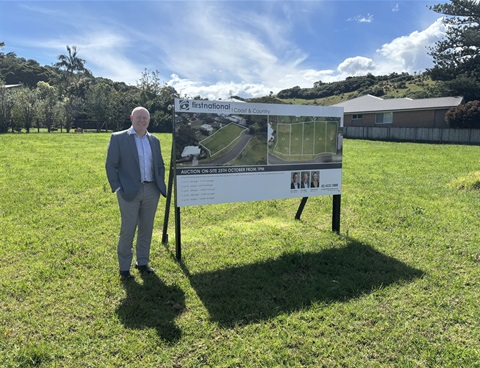Adventures in Climate Change: Episoe 6 - The COPs and NDCs
Local Contributor
08 October 2025, 12:00 AM

By Ray Johnson
Welcome to first-time and regular readers. In this episode we explore the political clearing house for global climate action known as the Conference of the Parties (COP) and the important “Nationally Determined Contributions”.
In Episode One we sketched the international framework for assessing climate science and taking action.
To recap: As the scientific evidence grew the IPCC was formed to conduct assessments of the science.
And these assessments underpinned the creation of the United Nations Framework Convention on Climate Change (UNFCCC - 1994), the Kyoto Protocol (1997), and the Paris Agreement (2016).
The Framework Convention (UNFCCC) has been ratified by 198 countries who come together annually to form the decision-making COP.
Seven of the 29 articles (3, 4, 7, 9, 10, 11 and 13) of the Paris Agreement detail the ‘Nationally Determined Contributions’ (NDCs) commitments and process.
NDCs are what actions individual countries decide to do in order to meet the Paris Agreement targets: holding “the increase in the global average temperature to well below 2 degrees C above pre-industrial levels” and pursuing efforts “to limit the temperature increase to 1.5 degree C above pre-industrial levels.”
NDCs are the pointy end of climate change governance.
They need to be updated every five years.
Each successive NDC “will represent a progression” on a country’s existing NDC.
A ‘Global Stock-take’ to assess progress (Article 14) is also held on a five-year cycle.
COP30 is being held in Belém, Brazil running from 10-21 November.
It’s a vitally important gathering as countries need to present their new NDC actions to be achieved by 2035.
As at 25 September around 100 countries have published their updated NDCs.
How does this work in Australia?
The Australian Government responds to the advice of the Climate Change Authority, an independent statutory authority established in 2011.
The chair and board are well credentialed, with a wide range of expertise and experience.
Sir Humphrey Appleby GCB KBE MVO would describe the membership as “Sound, Minister”.
Their 2035 Emissions Reduction Targets Report was provided to Government but not publicly released until after the official Government announcement.
The Government’s NDC release cycle began with the publication last month of Australia’s first National Climate Risk Assessment, painting a potentially grim future.
A ‘partnership’ of the Bureau of Meteorology, the CSIRO, the Australian Bureau of Statistics and Geoscience Australia titled the Australian Climate Service provided the assessment.
The experts initially identified 56 risks with the Australian Government (not the scientists) then nominating 11 priority risks for detailed analysis.
During this work a further seven risks to Aboriginal and Torres Strait Islander Peoples were identified.
The Assessment groups the risks under eight key functional systems (alphabetical order): Aboriginal and Torres Strait Islander Peoples; Communities; Defence and national security; Economy, trade and finance; Health and social support; Infrastructure and the build environment; Natural environment; and Primary industries and food.
Four key cross-system risks are listed: Coastal communities and settlements (hello Kiama); Governance; Supply chains; and Water security.
On 18 September, the Australian Government released a package that included the 2035 Nationally Determined Contribution.
The new national target is to reduce emissions by 62–70% below 2005 levels by 2035.
The Government claimed “this target is ambitious, achievable, and in Australia’s national interests”.
Also included were:
- A Net Zero plan with five priorities: clean electricity; lowering emissions; expanding clean fuel use; accelerating new technologies; and scaling up net carbon removals.
- Five sector plans: electricity and energy; agriculture and land; the built environment; industry; and resources. It’s not immediately apparent where the transport sector fits.
My view is Australia, in absolute terms a relatively small emitter (around the size of the international aviation industry), is at the mercy of the international response.
There are suggestions Australia will be one of the most impacted nations from climate change.
To have any credibility in urging others to act Australia has to be a leader in emissions reduction.
While a relatively small emitter Australia has a very high per-capita emissions status (0.33% of world population, 0.97% share of emissions).
Historically Australia has had a COP reputation as a ‘spoiler’.
The ‘influence’ situation is complicated by our relationships with the major emitters and our ongoing reliance on earnings from fossil fuel exports.
According to the European Commission’s EDGAR database GHG emissions of all world countries – 2025 Report (9 September 2025): "China, the United States, India, the EU27, Russia and Indonesia were the world's largest GHG emitters in 2024.
"Together they account for 51.4% of global population, 62.5% of global gross domestic product, 64.2% of global fossil fuel consumption
and 61.8% of global GHG emissions.”
China, our major trading partner, is seen as a threat to stability in the region.
It is also the major supplier of solar panels and electric vehicles and other renewable energy products.
While its emissions have been increasing, China has committed to a 7-10% reduction in greenhouse gas emissions by 2035.
This is its first NDC.
America, our major defence partner and second largest trading partner, has abandoned the global process … “drill baby drill” says the president ... and is conducting a global tariff war.
With a little over 4% of the world’s population, the USA is responsible for more than 11% of global emissions.
India, our fifth largest trading partner, had the largest absolute increase in emissions in 2024.
Indonesia, our 11th largest trading partner and closest large neighbour, had the largest relative increase in emissions (+5.0%) in 2024.
Only the EU (Germany is the largest trading partner member) decreased emissions.
Recent decisions by the Minister for the Environment and Water in approving major fossil fuel projects are, to say the least, not helpful.
Australia has lost a lot of time, nearly two decades, due to political argy bargy on climate change policy.
Together the duopoly (ALP and LNP) have ruled out a price on carbon, the most efficient and effective way of reducing emissions in free-market economies.
Neither offered a preview of the anticipated updated NDC in the recent federal election, despite the election being held after the original February 2025 deadline for countries to submit.
The proposed national ‘climate’ trigger’ environmental legislation, promised by the ALP for the previous term and in the final stages of drafting, was scrapped in the run-up to the May federal election.
Australia remains fully committed to high population growth rates and absolute economic growth (the Ponzi Scheme).
There’s one foot on the accelerator and one on the brake.
In my view Australia lacks the credibility to be a persuasive climate change policy leader on the global stage. We await our fate.
NEWS




